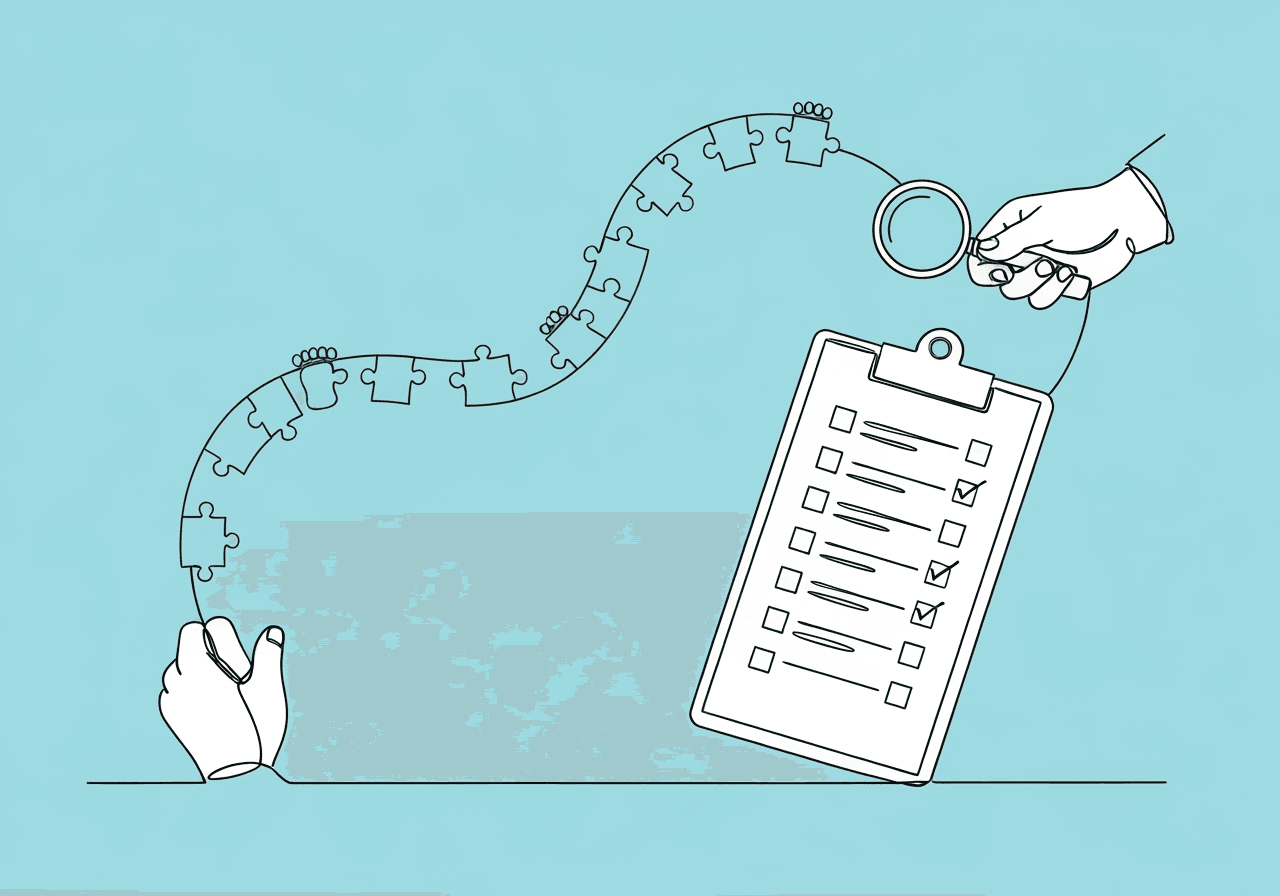BCBA Service Discontinuation Ethics: BACB Guide

Navigating BCBA service discontinuation ethics can be complex—one wrong step risks client harm, ethical breaches, or professional repercussions. As Board Certified Behavior Analysts (BCBAs), you're bound by the BACB's Ethics Code to prioritize client welfare while ensuring smooth transitions. According to the Behavior Analyst Certification Board (BACB) Ethics Code for Behavior Analysts (2022), what was previously outlined in section 2.15 of the 2016 code is now detailed in section 3.15. This section emphasizes appropriate discontinuation to avoid abandonment and maintain continuity of care.
This FAQ-style guide breaks down BCBA service discontinuation ethics, based on BACB guidelines and ethical best practices. By the end, you'll have a practical checklist for compliance, helping you uphold ethical standards while delivering quality ABA care.
- Learn the key criteria for when to discontinue services.
- Understand the documentation required to prevent client abandonment.
- Discover how to handle stakeholder disagreements ethically.
- Identify essential data for the discontinuation file.
- Recognize the risks of poorly timed service discontinuation.
Understanding BCBA Service Discontinuation Ethics and Documentation
The BACB's ethical framework requires BCBAs to document service discontinuation meticulously to protect clients and demonstrate compliance. Under the current code (section 3.15), discontinuation must align with client needs—never abruptly, and always with a plan to prevent harm. This builds on the older 2.15 guideline, which stressed interrupting services only in the client's best interest, with steps like referrals and continuity plans.
Ethical documentation is a safeguard against audits or complaints. For instance, records should capture discussions, progress data, and transition strategies, ensuring transparency. Integrating this into your practice supports client abandonment prevention in ABA by formalizing decisions and minimizing disruptions. As noted in BACB enforcement summaries, improper discontinuation ranks among common violations, often tied to inadequate records.
By prioritizing these principles, BCBAs can foster trust with families and colleagues. For broader strategies, check our guide on BCBA Ethical Documentation Best Practices.
What does "clinically appropriate" mean for service discontinuation?
Clinically appropriate discontinuation occurs when services align with evidence-based outcomes, as defined by the BACB Ethics Code section 3.15. This means ending services only if the client no longer needs them, isn't benefiting, or continued intervention causes harm—always prioritizing welfare over financial or convenience factors.
Goal mastery is a primary trigger: when individualized objectives are met and maintained across settings. For example, if data shows sustained independence in daily living skills for six months without regression, discontinuation supports long-term success. Conversely, a lack of progress warrants review but not an abrupt stop. The BACB requires discussing these issues with stakeholders and providing pre-termination support, like family training for maintenance.
In practice, use ongoing assessments to guide decisions. According to guidelines from the BHCOE on Ethically Fading ABA Services (2016), you should outline fading criteria at intake to avoid surprises. This ensures discontinuation promotes autonomy rather than abandonment.
What documentation is required to prevent "client abandonment" (BACB 3.15)?
To prevent client abandonment, BCBAs must document every step of the transition process per BACB section 3.15. This section mandates discussing needs, offering pre-termination counseling, and facilitating referrals. Abandonment happens when services end without reasonable continuity efforts, violating ethical duties and risking BACB sanctions.
Required records include a formal notice of discontinuation with rationale, evidence of client and caregiver discussions, contingency plans for interruptions, and referral details to alternative providers. For transitions, log handover communications, updated progress reports, and any telehealth bridging to minimize gaps. Best practices, such as providing 30-day notices where possible, align with the BACB's emphasis on reasonable steps for continuity.
This thorough BACB 2.15 documentation not only averts ethical lapses but also supports audits—always include dates, signatures, and behavioral data for defensibility.
How should BCBAs document stakeholder disagreement regarding termination?
When stakeholders disagree on termination—such as a family insisting on continuation despite clinical indicators—BCBAs must document objectively to uphold ethics and resolve conflicts. BACB section 3.15 requires prioritizing the client's best interests while respecting informed consent, without coercion.
Start by recording the disagreement in meeting notes. Detail each party's views, the evidence presented (e.g., progress graphs showing a plateau), and proposed resolutions like a revised plan or a second opinion. If the family pushes to continue, note the risks of prolonged services (e.g., dependency) and discuss alternatives, such as maintenance sessions. Escalate to an ethics consultation if needed, logging the advisor's input.
Documentation should remain neutral. For example, use phrases like, "Family expressed a desire to extend services due to observed home gains; BCBA recommended discontinuation based on 6-month data stasis." Including signed acknowledgments of these discussions demonstrates transparency. This approach protects against claims of abandonment while fostering resolution. For more resources, see our guide on ABA Informed Consent for Parents.
What data must be in the discontinuation file for ethical compliance?
Discontinuation files demand detailed, client-centered data to justify decisions and enable future care, aligning with BACB sections 3.15 and 2.11. A final, thorough report should summarize the treatment history, outcomes, and rationale for ending services. Also include detailed progress summaries with graphs, current assessments (e.g., VB-MAPP scores), transition plans, and any correspondence on disagreements.
The BACB emphasizes making files accessible for subsequent providers, so format them digitally with timestamps. As outlined in Navigating the BCBA Code of Ethics (2023), include pre-termination counseling notes to show continuity efforts. This client abandonment prevention in ABA strategy ensures files support seamless handoffs. Review our BCBA Case Transfer Checklist for transfer protocols.
What are the risks of premature or delayed service discontinuation?
Premature discontinuation risks client abandonment, ethical violations, and harm like skill regression. Delays can lead to unnecessary costs, dependency, or provider burnout. Both scenarios can trigger BACB audits or complaints under section 3.15.
Prematurely ending services without referrals or counseling violates continuity duties, potentially resulting in certificant suspension or fines. Delayed discontinuation ignores the "no longer benefiting" criteria, risking harm from over-intervention and audit flags for inefficient practices.
To mitigate these risks, monitor progress quarterly and document your rationale. The Ethics Code (2022) advises proactive planning. For detailed risk navigation, explore our Guide to BCBA Service Termination Documentation.
Frequently Asked Questions
When is it ethical to discontinue ABA services if progress is slow but steady?
Ethical discontinuation hinges on BACB section 3.15: services should end when they are no longer clinically necessary. Slow progress alone doesn't justify stopping; instead, revise interventions first. Document data trends and stakeholder input to ensure decisions prioritize client welfare and avoid abandonment.
How do BCBAs handle service interruptions for personal reasons?
Per BACB guidelines, develop contingency plans at intake, including delegation to qualified colleagues or using telehealth. Document all client notifications and efforts to ensure continuity, such as providing referrals. This fulfills section 3.14 on interruptions and minimizes harm.
What role does informed consent play in service discontinuation?
Informed consent requires ongoing discussions about potential termination, per BACB section 2.09. Document family education on the risks and benefits of continuing versus ending services, and obtain signatures. This practice helps prevent disputes and supports BCBA service discontinuation ethics by empowering stakeholders.
Are there state-specific rules that override BACB guidelines?
State licensure may add requirements, like notice periods, but BACB ethics form the baseline. For example, Minnesota mandates a 30-day transition period for certain ABA services (Minnesota Statutes § 256B.0949). Requirements vary by state, so always check local regulations and the BACB Ethics Codes page.
How can BCBAs track long-term outcomes post-discontinuation?
Use follow-up protocols, such as scheduling check-ins at 3 and 6 months with consent, and document maintenance data. This aligns with the ethical responsibility to monitor the effects of the services provided.
Adhering to BCBA service discontinuation ethics through robust documentation transforms potential pitfalls into protected practices. As evidenced by BACB guidelines, proactive planning under section 3.15 ensures client-centered transitions, reducing abandonment risks and enhancing outcomes. Remember, ethical decisions stem from data, collaboration, and transparency—the core of professional ABA.
Checklist for 3.15 Compliance:
- Confirm clinical appropriateness (e.g., mastery data).
- Document discussions and pre-termination support.
- Include referrals and transition plans in records.
- Obtain signed consents and notices.
- Store files securely for audits.
This approach not only safeguards your certification but empowers families for lasting success. For more on ethical workflows, visit our BCBA Ethical Documentation Best Practices.
Popular in Compliance & HIPAA
- 1
BCBA Procedural Fidelity Checklist: Essential H-6 Guide
7756 min read - 2
ABA Documentation Checklist: RBT Compliance Guide 2025
7729 min read - 3
RBT Renewal Competency Documentation Guide for BCBAs
5786 min read - 4
BCBA Ethical Documentation Best Practices
4296 min read - 5
RBT Supervision Log Audit Checklist for BCBAs
3906 min read
Popular in Compliance & HIPAA
- 1
BCBA Procedural Fidelity Checklist: Essential H-6 Guide
7756 min read - 2
ABA Documentation Checklist: RBT Compliance Guide 2025
7729 min read - 3
RBT Renewal Competency Documentation Guide for BCBAs
5786 min read - 4
BCBA Ethical Documentation Best Practices
4296 min read - 5
RBT Supervision Log Audit Checklist for BCBAs
3906 min read
Related Resources
Explore more helpful content on similar topics

ABA Incident Report Documentation: FAQ Guide
Master ABA incident report documentation in this essential FAQ guide. Learn RBT critical incident checklists, BCBA reporting requirements, and how to write objective incident notes for ethical, accurate records. Ensure compliance today!

Guide for BCBAs: Documenting Client Assent & Dissent
Learn how BCBAs document client assent and dissent per ABA Ethics 2.11. Discover step-by-step methods, measurement tools, and checklists to ensure ethical compliance and client-centered care in your practice.

BCBA Checklist: Documenting a New Behavior Intervention Plan (BIP) for Compliance
Discover the BCBA new BIP documentation checklist for seamless compliance in ABA. Learn essential steps from FBA data linkage to crisis protocols, replacement behaviors, and final audit readiness to elevate your behavioral interventions.